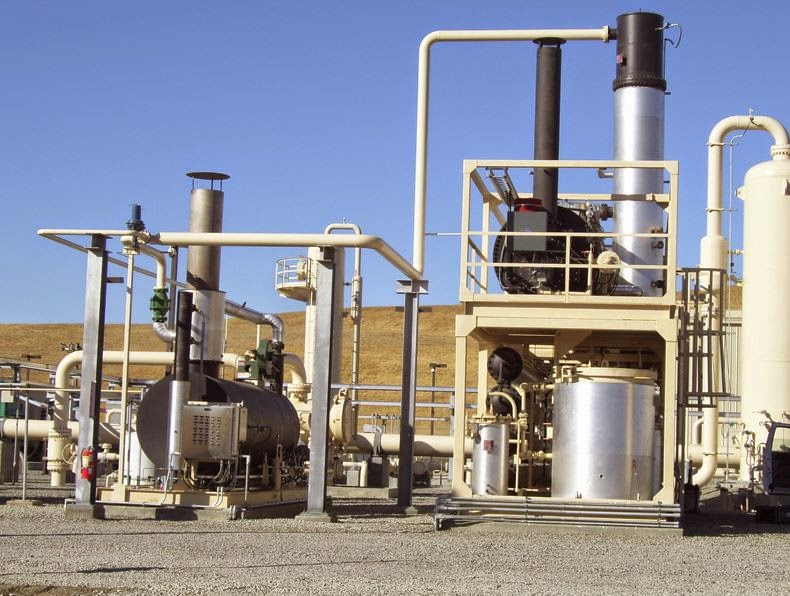NATURAL GAS DEHYDRATION AT HYDRAULIC FRACTURING SITES USING TRIETHYLENE GLYCOL (TEG)
With all the compressor stations being built in the United States to help transport the natural gas to the point of destination, we often here the term glycol dehydration unit. Natural gas contains a certain amount of water. That water must be removed, along with other constituents, prior to be allowed to enter the pipeline. This is to prevent pipeline corrosion and mechanical damage to downstream equipment.
Triethylene glycol (TEG) is the predominant liquid desiccant employed to remove water vapor from natural gas streams.
Most natural gas producers use Triethylene glycol (TEG) to remove water from the natural gas stream in order to meet the pipeline quality standards. This process is required to prevent hydrates formation at low temperatures or corrosion problems due to the presence of carbon dioxide or hydrogen sulfide (regularly found in natural gas).
Dehydration, or water vapor removal, is accomplished by reducing the inlet water dew point (temperature at which vapor begins to condense into a liquid) to the outlet dew point temperature which will contain a specified amount of water.
Absorption of water vapor in the TEG is the common method. The wet gas is brought into contact with dry glycol in an absorber in a packed or tray section. Water vapor is absorbed in the glycol and consequently, its dew point reduces. The wet rich glycol then flows from the lower section of the absorber to a regeneration system in which the entrained gas is separated and fractionated in a column and reboiler. The dry gas exits at the top of the absorber. The heating allows boiling off the absorbed water vapor and the water dry lean glycol is cooled (via heat exchange) and pumped back to the absorber.
Rich glycol passes through a reflux coil in the reboiler still, preheats in a glycol/glycol exchanger and then enters the flash tank. In the flash tank, hydrocarbons and dissolved gas are separated from the rich glycol. The rich glycol exits the flash tank and passes through a charcoal filter, sock filter, and is subsequently preheated in another glycol/glycol exchanger prior to entering the reboiler through the reboiler still column. The rich glycol is heated to approximately 400°F as water is boiled off and exits through the vent atop the reboiler still.
Lean glycol is cooled prior to being pumped through a glycol/gas heat exchanger and into the absorber to continue the process. Water removal depends on several factors such as: gas pressure and temperature, gas composition, glycol circulation rate, glycol purity and efficiency of glycol to gas contact.
CONDENSATE STABILIZATION
Many natural gas fields, such as the hydraulic fracturing fields of North Dakota, also produce a light hydrocarbon liquid product (condensate) along with the gas. For this liquid to be shipped safely in atmospheric pressure trucks and to avoid high vaporization losses, the liquid is stabilized using heat and a fraction tower to set the liquid vapor pressure within acceptable limits. The light products removed from the heavier liquid can be used as fuel and/or many other uses. The stabilized liquid is cooled before going to storage tanks.
Metropolitan Engineering, Consulting & Forensics (MECF)
Providing Competent, Expert and Objective Investigative Engineering and Consulting Services
P.O. Box 520
Tenafly, NJ 07670-0520
Tel.: (973) 897-8162
Fax: (973) 810-0440
E-mail: metroforensics@gmail.com
We are happy to announce the launch of our twitter account. Please make sure to follow us at @MetropForensics or @metroforensics
Metropolitan appreciates your business.
Feel free to recommend our services to your friends and colleagues.








This is the nice blog ! Glycols are extremely stable to thermal and chemical decomposition, readily available at moderate cost, useful for continuous operation and are easy to regenerate.Get more information about Gas Dehydration.
ReplyDelete